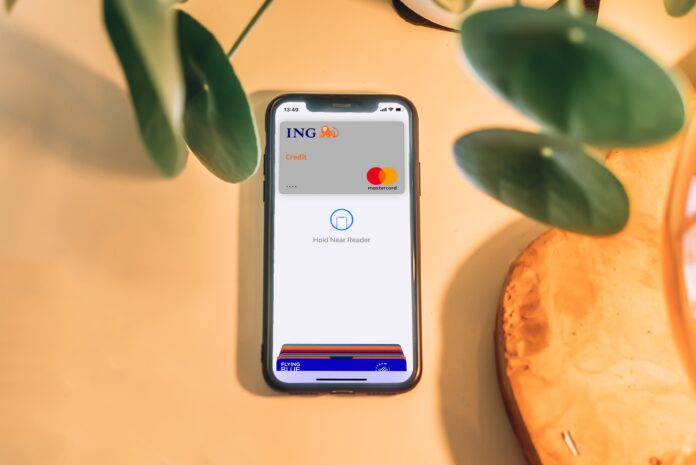In recent years, the financial industry has witnessed a significant transformation with the advent of digital technology. One of the most notable changes has been the rise of digital banks. A digital bank, also known as an online bank or virtual bank, is a financial institution that operates primarily or exclusively through digital channels, such as websites and mobile apps, rather than traditional brick-and-mortar branches. These banks have revolutionized the way people interact with their finances, offering a range of services and features that cater to the needs and preferences of the digital-savvy customers of today.
Digital banks provide all the essential banking services that traditional banks offer, such as checking and savings accounts, loans, credit cards, and investments. However, what sets them apart is their emphasis on providing a seamless and convenient user experience through their digital platforms. Customers can access and manage their accounts anytime, anywhere, using their smartphones, tablets, or computers. This accessibility has made banking more convenient and efficient, as users no longer need to visit a physical branch or adhere to traditional banking hours.
The key advantage of a digital bank lies in its ability to streamline and automate various banking processes, resulting in faster and more efficient services. Opening an account with a digital bank is typically a quick and straightforward process that can be completed entirely online. Users can verify their identity through digital means, eliminating the need for paper documents and in-person visits. Once the account is open, customers can easily deposit funds, transfer money, pay bills, and manage their finances with just a few taps on their screens.
Digital banks also excel in providing personalized and data-driven financial solutions. By leveraging advanced analytics and machine learning algorithms, these banks can analyze customer data to gain insights into their financial behavior and preferences. This information allows digital banks to offer tailored recommendations and personalized financial advice, empowering users to make more informed decisions about their money. Additionally, many digital banks provide real-time spending insights and budgeting tools that help users track their expenses and manage their finances effectively.
Security is a top priority for digital banks, and they invest heavily in robust cybersecurity measures to protect their customers’ sensitive information and transactions. These banks use advanced encryption technologies to secure data transmission and storage, ensuring that customer details and financial activities are safeguarded from unauthorized access. Furthermore, digital banks often employ multi-factor authentication methods, such as biometric authentication or one-time passwords, to add an extra layer of security to user accounts.
The rise of digital banks has not only benefited individual consumers but also small businesses and entrepreneurs. Digital banks offer business accounts with features tailored to the needs of businesses, such as invoicing tools, payroll management, and integration with accounting software. These features simplify financial management for businesses, allowing them to focus more on their core operations.
Furthermore, digital banks have also enabled greater financial inclusion, as they provide banking services to individuals who may have limited access to traditional banking services. In many parts of the world, particularly in developing countries, physical bank branches are scarce, making it difficult for people to access basic financial services. Digital banks, on the other hand, can reach a wider audience through their online platforms, making banking services accessible to anyone with an internet connection. This inclusivity plays a crucial role in empowering individuals and communities by providing them with the tools and resources needed to manage their finances and improve their economic well-being.
Despite the numerous benefits of digital banks, there are some considerations to keep in mind. One of the main concerns is the lack of physical presence. While digital banks offer convenience and accessibility, some customers may still prefer face-to-face interactions and the comfort of physical branch locations. Additionally, certain transactions, such as depositing cash or obtaining cashier’s checks, may require the use of traditional banks. However, many digital banks have addressed these limitations by partnering with traditional financial institutions or establishing strategic alliances to provide their customers with access to physical services when needed. These partnerships allow customers to deposit or withdraw cash, obtain physical cards, or seek assistance from traditional bank branches.
Moreover, the competition in the digital banking space has been rapidly increasing. As more players enter the market, digital banks face the challenge of differentiating themselves and offering unique value propositions. To stand out, some digital banks focus on niche markets or specific customer segments, catering to the needs of millennials, freelancers, or small businesses, for example. Others differentiate themselves through innovative features such as round-up savings, instant money transfers, or integration with third-party financial apps. Staying ahead of the competition requires continuous innovation and the ability to adapt to changing customer expectations and technological advancements.
Regulatory frameworks and compliance requirements also play a vital role in the operations of digital banks. Since digital banks operate across different jurisdictions, they must adhere to various financial regulations and comply with anti-money laundering (AML) and know-your-customer (KYC) requirements. These regulations are in place to ensure the safety and integrity of financial transactions and protect customers from fraudulent activities. Digital banks invest in robust compliance systems and work closely with regulatory bodies to maintain transparency and trust in their operations.
Looking ahead, the future of digital banking appears promising. As technology continues to advance, digital banks are likely to introduce more innovative services and features. For instance, the adoption of blockchain technology may enable digital banks to offer faster, more secure, and transparent cross-border transactions. Artificial intelligence (AI) and chatbot technology can enhance customer support and provide personalized assistance round the clock. Additionally, the integration of Internet of Things (IoT) devices with banking services may revolutionize the way people manage their finances, with smart homes and wearable devices seamlessly interacting with digital banking platforms.
Furthermore, the ongoing digital transformation of the financial industry is pushing traditional banks to embrace digital banking and invest in their own online offerings. This convergence of traditional and digital banking is blurring the lines between the two, leading to a hybrid model where customers can enjoy the benefits of both physical and digital banking services. Traditional banks are incorporating digital channels into their operations, allowing customers to perform basic transactions online while still having access to in-person services when necessary.
In conclusion, digital banks have revolutionized the banking industry by leveraging digital technology to provide convenient, efficient, and personalized financial services. Through their online platforms, they offer a range of banking services, personalized recommendations, and real-time insights, catering to the needs of digitally-driven customers. While challenges such as security concerns and competition exist, the future of digital banking looks promising, with further innovation and integration with emerging technologies expected. As the financial landscape continues to evolve, digital banks are poised to play a significant role in shaping the future of banking and finance.






















